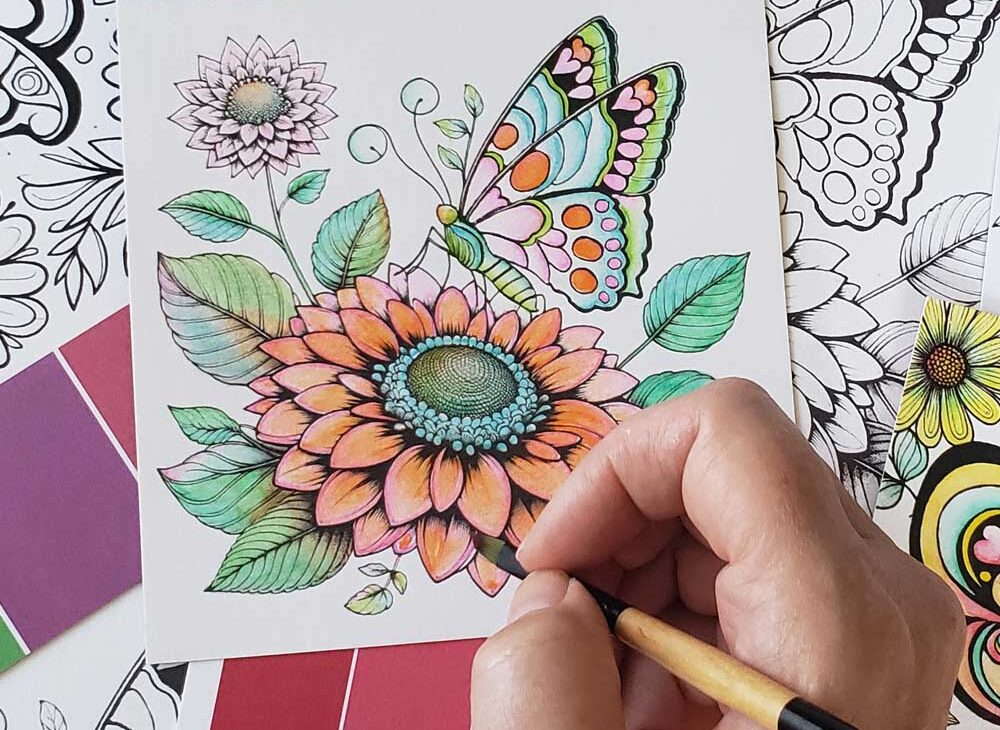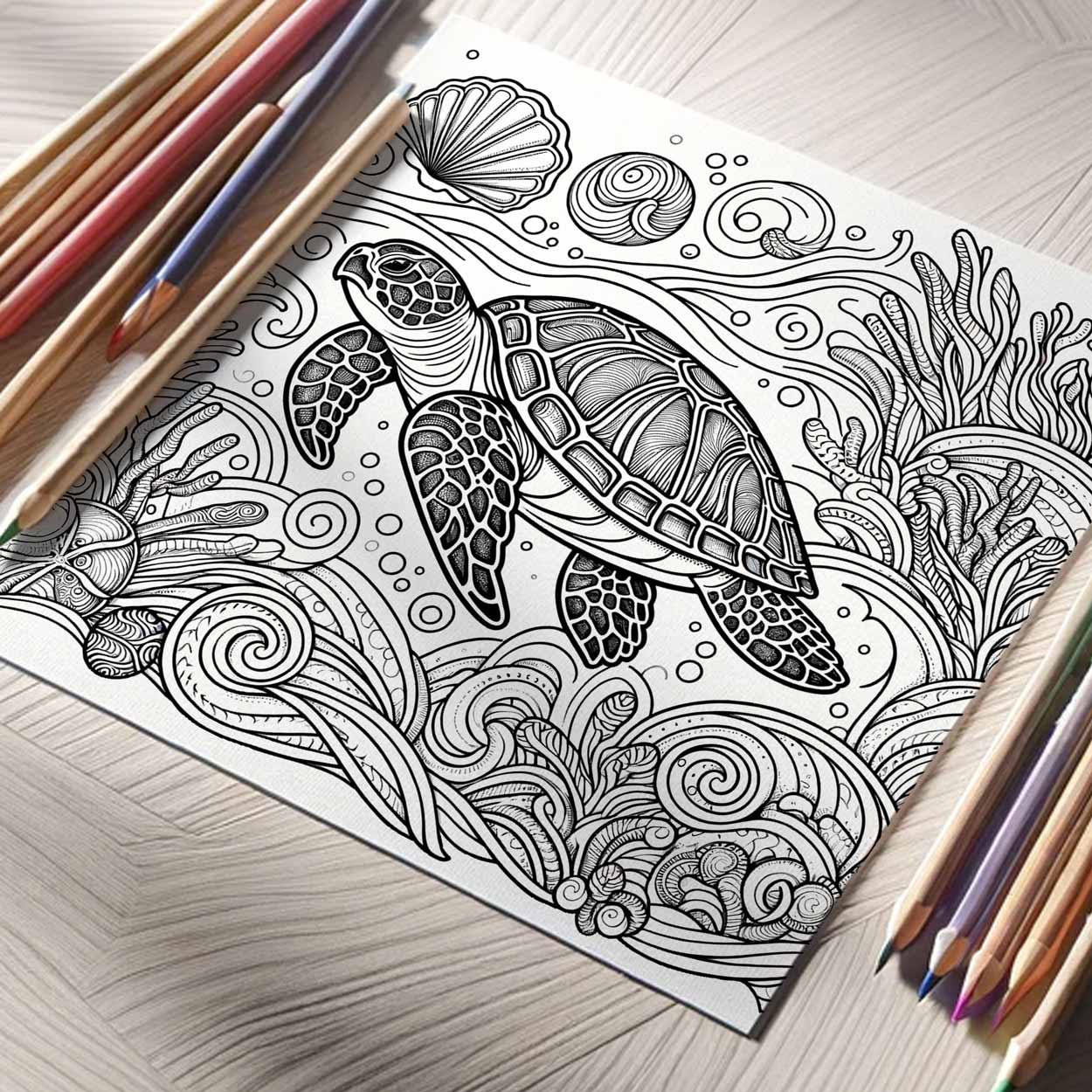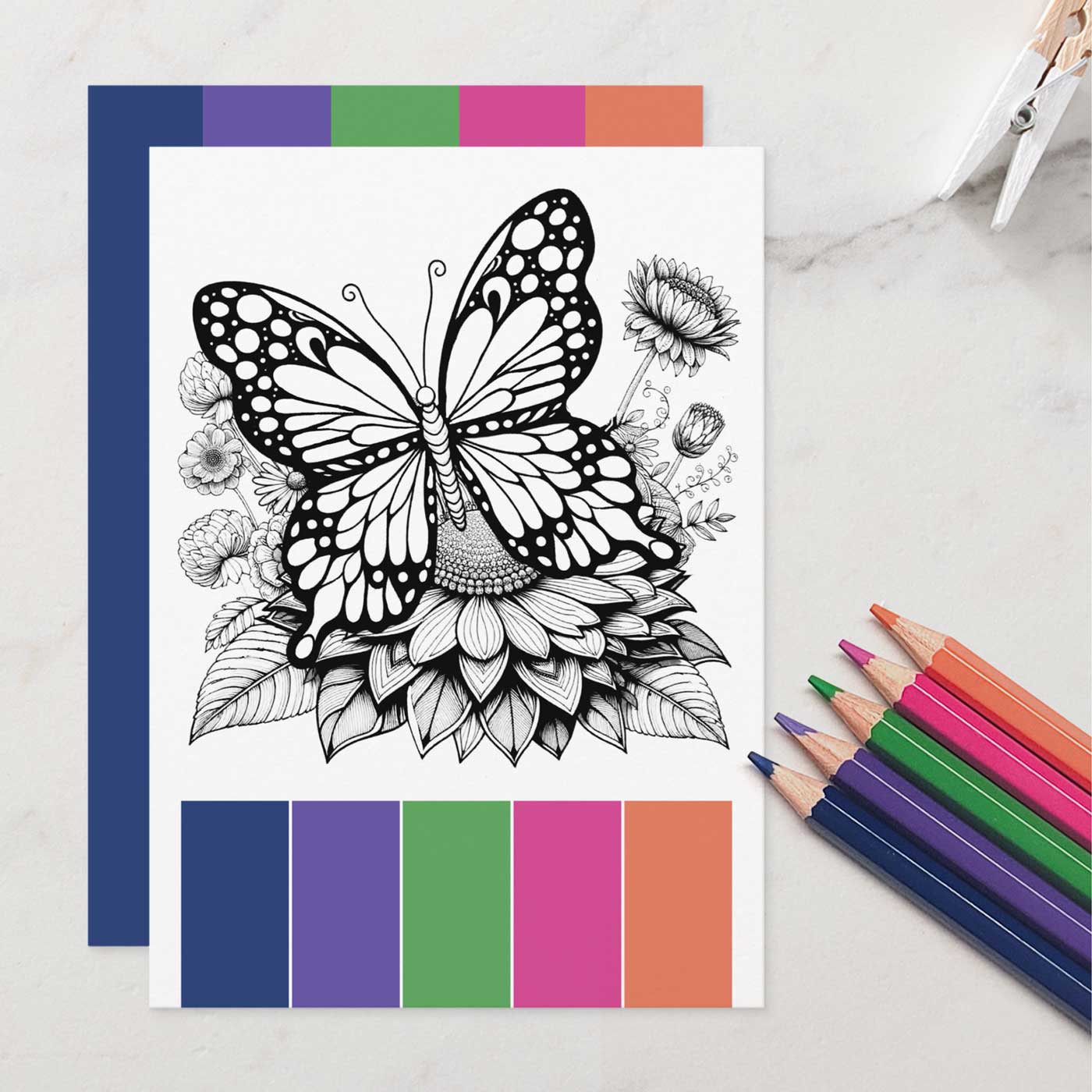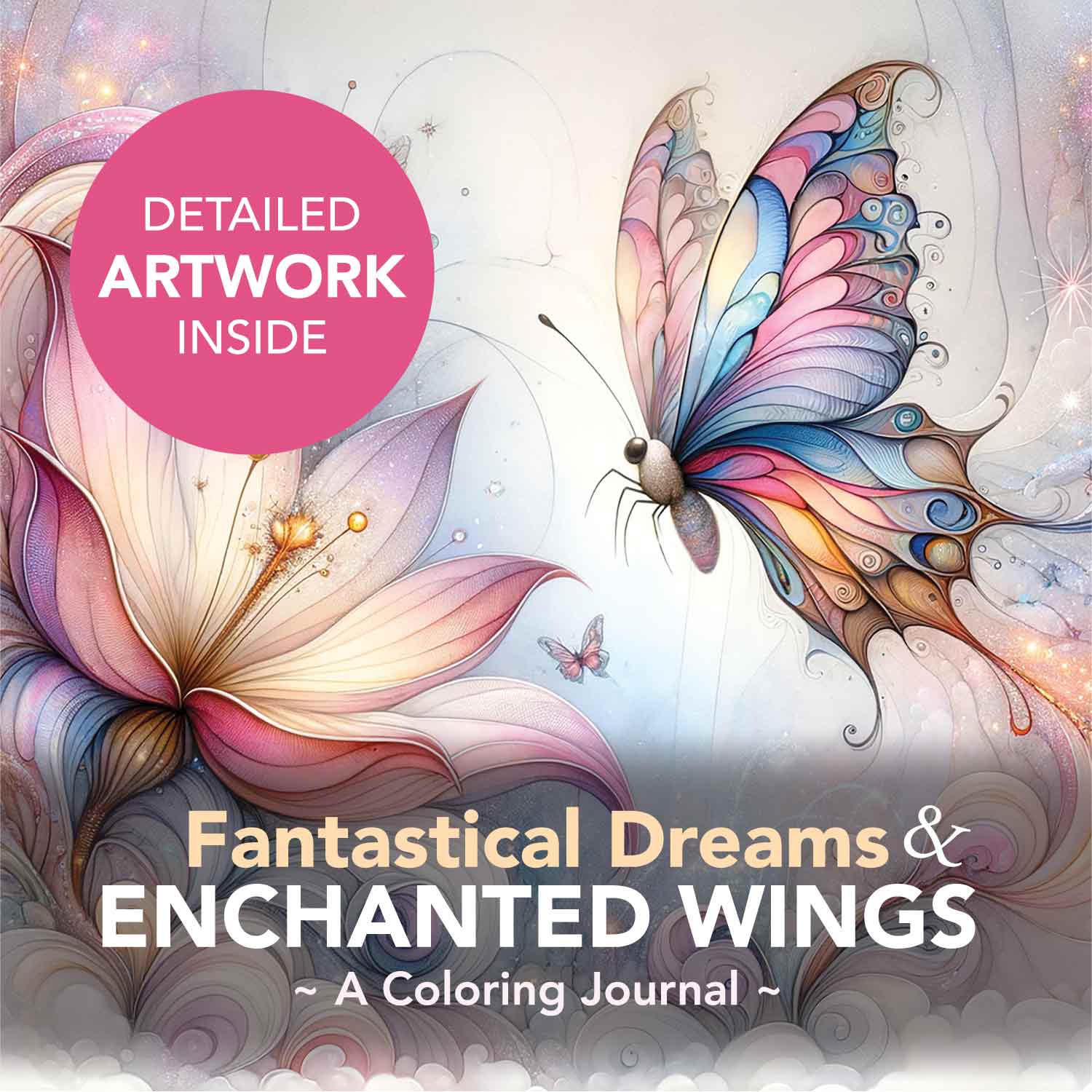Watercolor pencils might just be the secret weapon in your artistic arsenal. Combining the control and ease of use of colored pencils with the stunning effects of watercolors, these versatile tools offer artists, both novice and experienced, a unique way to explore their creativity. Here’s a comprehensive guide on how to use watercolor pencils to create vivid, expressive art.
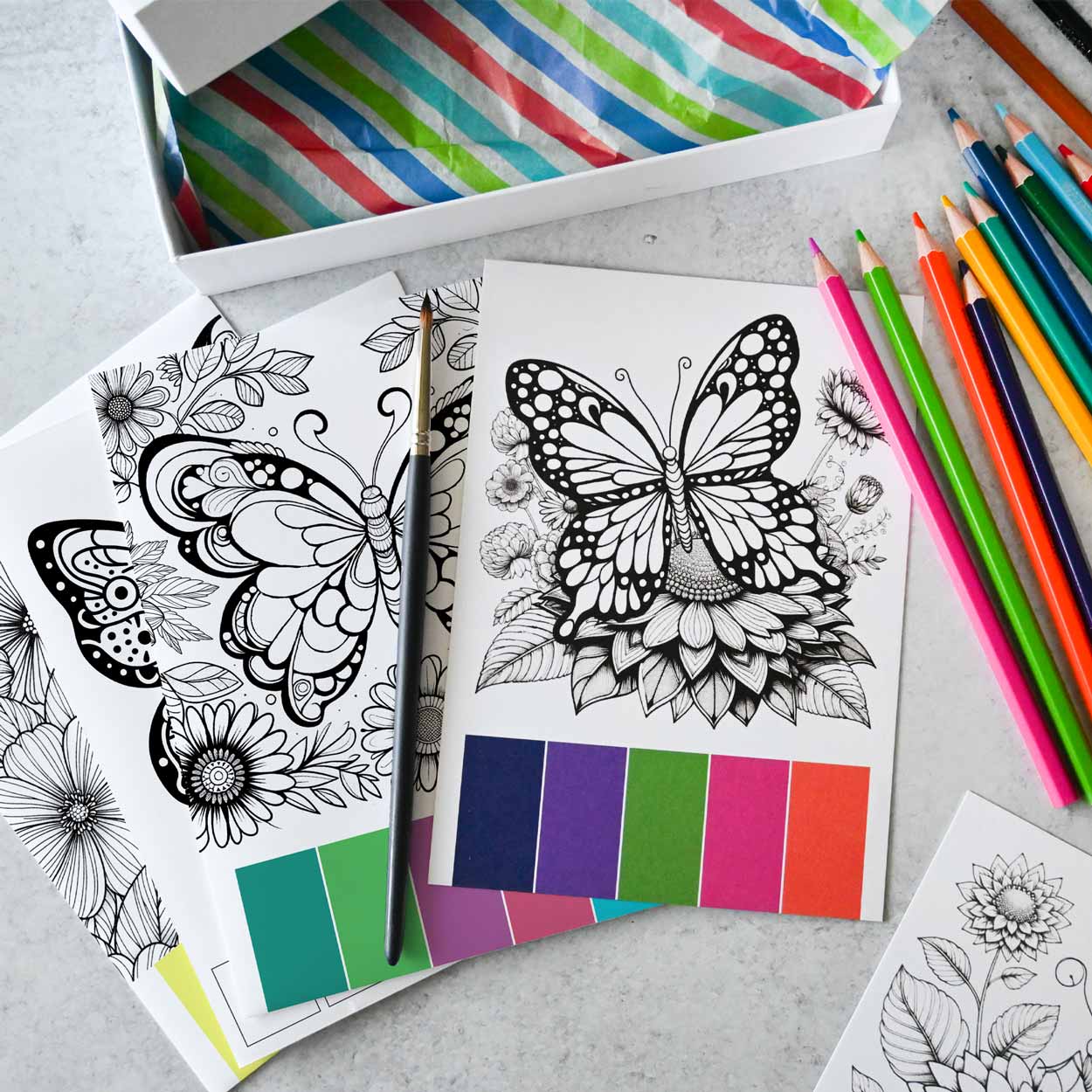
1. Choose the Right Materials
Before diving into your watercolor pencil artwork, make sure you have the right materials. Select high-quality watercolor pencils and watercolor paper, which is thicker and more absorbent than regular drawing paper. You’ll also need a brush (I love my number 5 and number 8 standard round brush), a cup of water, and a palette or a dish for mixing colors. Additionally, my unique butterfly coloring cards with a color matching system are designed to work beautifully with watercolors and watercolor pencils, providing an excellent base for your creations. Visit Do Tell A Belle on Etsy to see more.
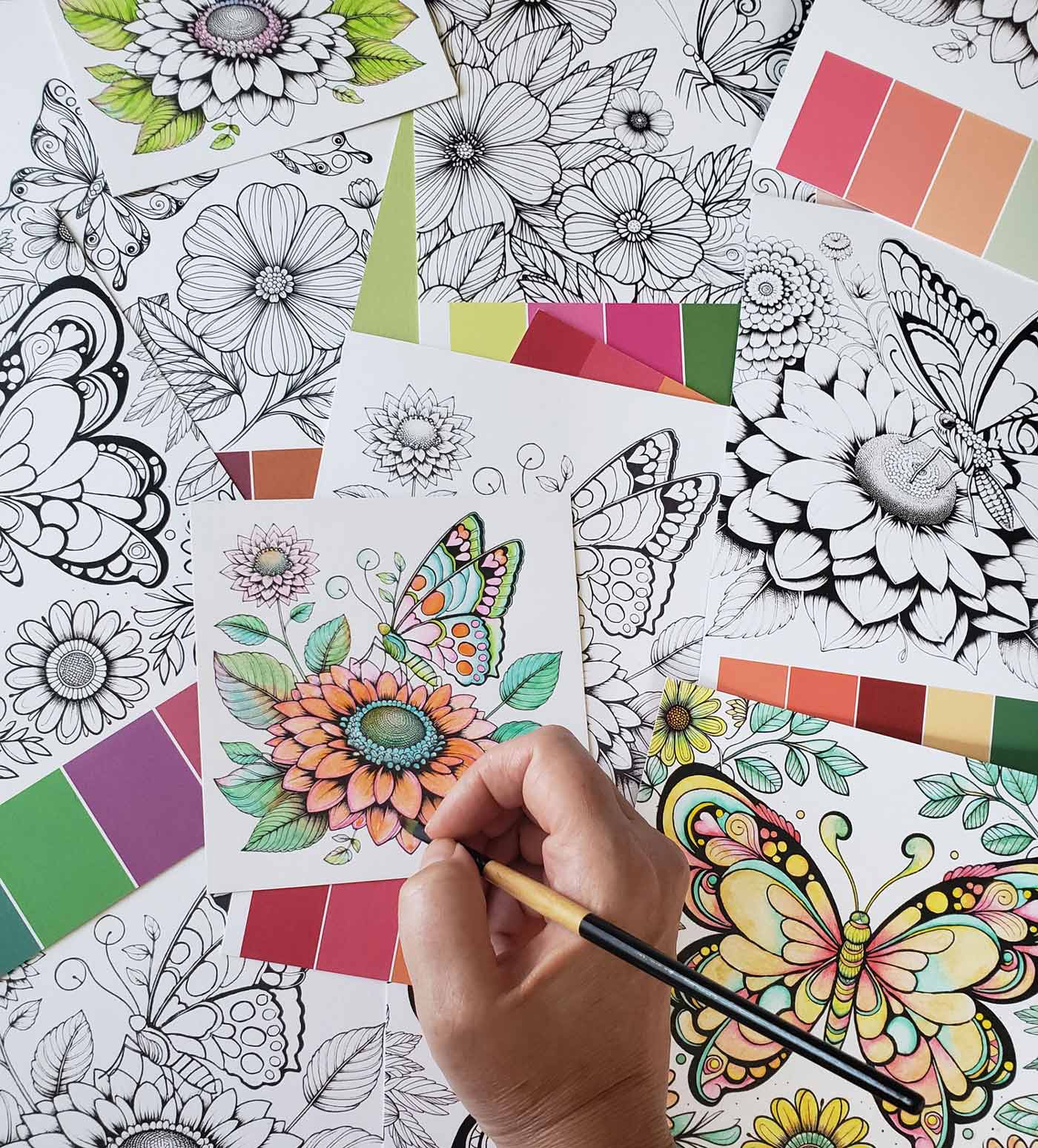
2. Basic Techniques
- Dry Technique: Just like regular colored pencils, you can use watercolor pencils dry. Sketch your image, and later you can decide whether to activate the colors with water. This technique allows for precise detailing and texture.
- Wet Technique: Dip your watercolor pencil in water before drawing. This will create a soft, intense line of color that spreads slightly on the paper, much like a traditional watercolor wash.
- Mix on Paper: Apply different colors in layers, then use a wet brush to blend them directly on the paper. This method is perfect for creating smooth transitions and gradients.
3. Layering Colors
Start with lighter colors and gradually work your way to darker shades. Light colors are difficult to cover up once a darker shade is applied over them. For depth and shadow, layer colors while they are dry and then use a brush to merge the colors. Experiment with overlapping and combining shades to see how they interact both dry and wet.
4. Experiment with Textures
Watercolor pencils can be used to create a variety of textures. For example:
- Grating: Use a knife or a grater to sprinkle watercolor pencil shavings onto your paper. Then, gently brush over them with a wet brush.
- Stippling: Use the tip of the pencil to dot colors onto the paper, then blend with water for a stippled effect.
- Scratching: Draw with your pencils, then use a sharp tool to scratch the surface, creating fine lines and details that can mimic grass, hair, or fur.
5. Mastering Water Control
The amount of water you use plays a crucial role in the outcome of your artwork. More water will dilute the colors for a translucent wash, while less water offers vibrant, opaque results. Practice controlling the wetness of your brush to achieve the desired effect.
6. Finishing Touches
Once you’re satisfied with your painting, allow it to dry completely. You can then add more details with both dry and wet pencils to refine the image. Watercolor pencils also lend themselves well to mixed-media projects, so feel free to incorporate ink, pastels, or other materials.
7. Preservation
To preserve your finished artwork, consider using a fixative spray. This will prevent the colors from running if they become wet again and can protect against fading.
Watercolor pencils are a delightful blend of predictability and surprise. They invite experimentation and offer artists a fantastic array of techniques and effects. Whether you’re sketching in a park or crafting a detailed portrait, these tools provide an enjoyable and versatile way to express your artistic vision. So, grab your set and start painting the world as you see it—one pencil stroke at a time!
You may also enjoy these articles. Click on the images below to read more:

